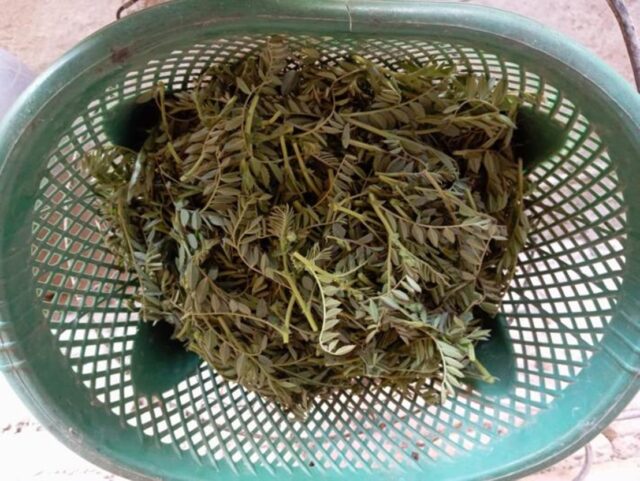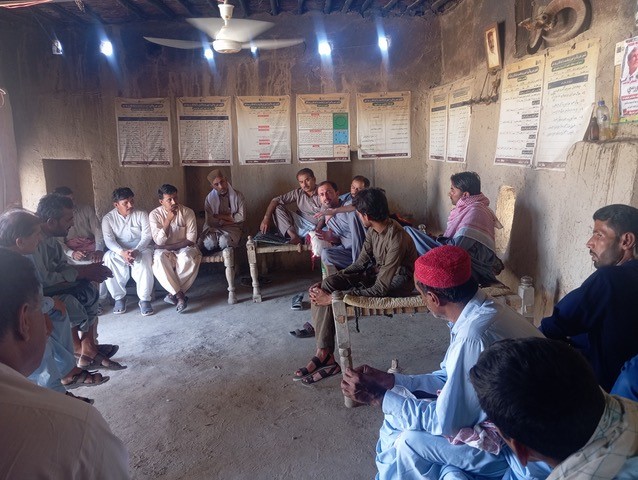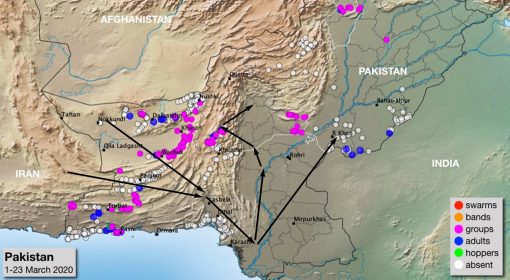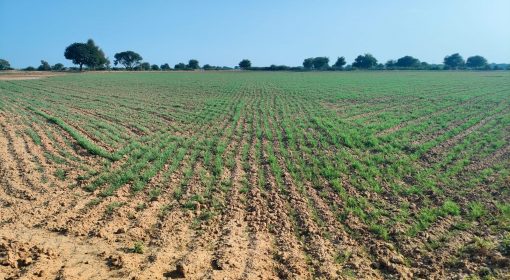by Manzoor Ali, Salam Buzdar and Frank van Steenbergen

Chickpeas have so much going for them. They are the right crop in the right conditions, maturing in a short period and searching for moisture, even when it is reclining. This makes chickpeas very suitable for rain-fed and flood-fed system in arid areas, where moisture comes occassionally and crops then need to thrive on the moisture they can access. Chickpeas are among the first crops historically domesticated.
We all know chickpeas as the rich sourch of protein – easily dried and then available when needed or when market prices are high. But also their leaves have value: they serve as vegetables, in areas where there are few such options.
In 2024, 50 farmers in District Dadu received chickpea seeds under the NEWARBI project. This followed an exchange visit of farmers from the spate irrigated areas in Dadu (Sindh Province) to Bhag Nari (Balochistan) in Pakistan. Spate irrigation systems use short term floods to store moisture in the large fields. They are unique system – with unique methods of land and water management, crop agronomy and farming practice. The area served by spate irrigation in for instance Pakistan and Afghanistan is extensive yet largely ignored. The potential additional area that can be served in both these countries is also large. According to a study commissioned by FAO, there is an existing area under these systems in Afghanistan and Pakistan is close to 2.5 Million hectares. The expansion area is close to 2.5 Million hectares as well.
The relative isolation of these area means that they are bypassed by regular farm extension and agricultural research. This neglect conceals another large potential for spate irrigated farming in Afghanistan and Balochistan – the opportunity to introduce new crops and increase the productivity of the existing areas.

Farmers from Dadu visited Bhag Nari, Balochistan, where they exchanged crop cultivation ideas with Balochistan farmers, including regarding chickpea farming. Strange as it may sound chick peas were not known in Dadu. The same was the case in Balochistan until five years ago. Then after another farmer exchange the crop was introduced from Punjab in Bhag Nari, where it is now the second most important crops, covering ten thousands hectares of land.
Could this success story be duplicated? There maybe another first. With the visit chickpea seeds were moved as well – taken from Bhag Nari in Balochistan to Naj Gaj in Dadu, Sindh. The first signs are very promising. Farmers like Abbas Brohi, Sikander Brohi, and female farmer Maryam expressed their happiness with the promising chickpea growth. The crop seems to fit very well in the Dadu system as well. They also shared that they were using the fresh tender chickpeas leaves as vegetables, cutting the crop multiple times (over five times) for consumption. There is much excitement.
It goes to show that many breakthroughs are around and just need to be triggered and that was is there is not necessary the best. It also goes to show the power and ease of farmer to farmer exchange, repeating the gamechanging experience in Balochistan,



